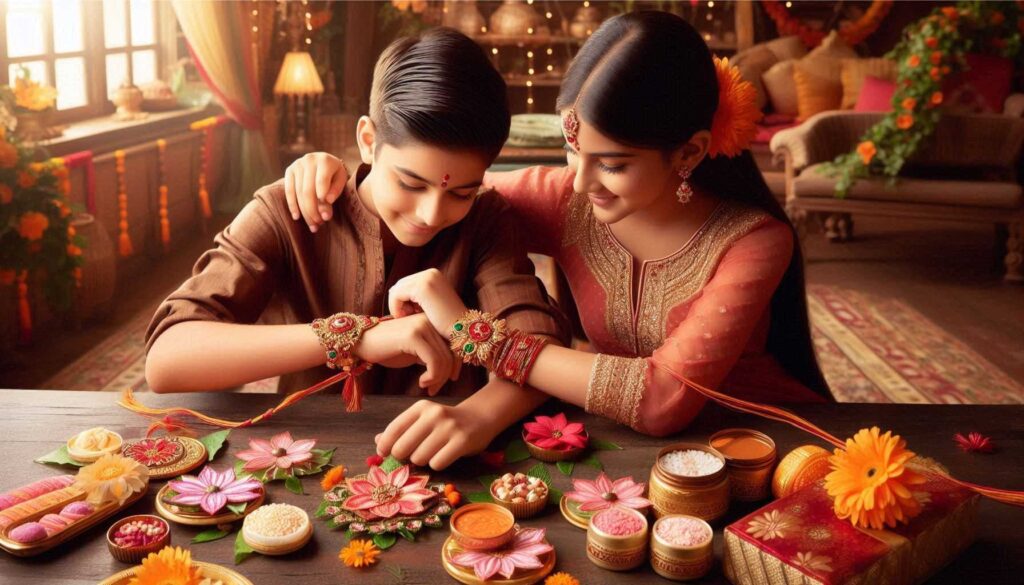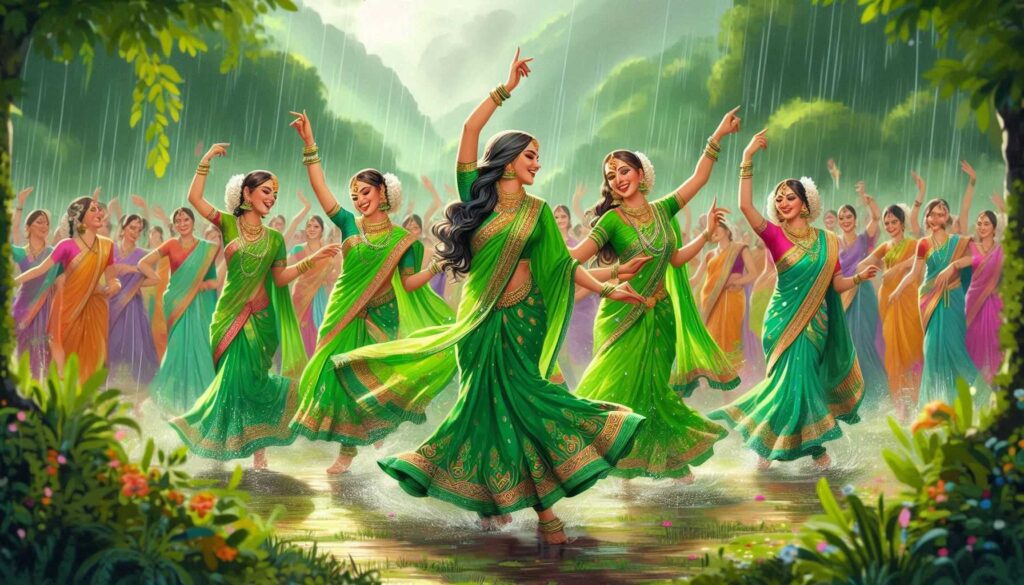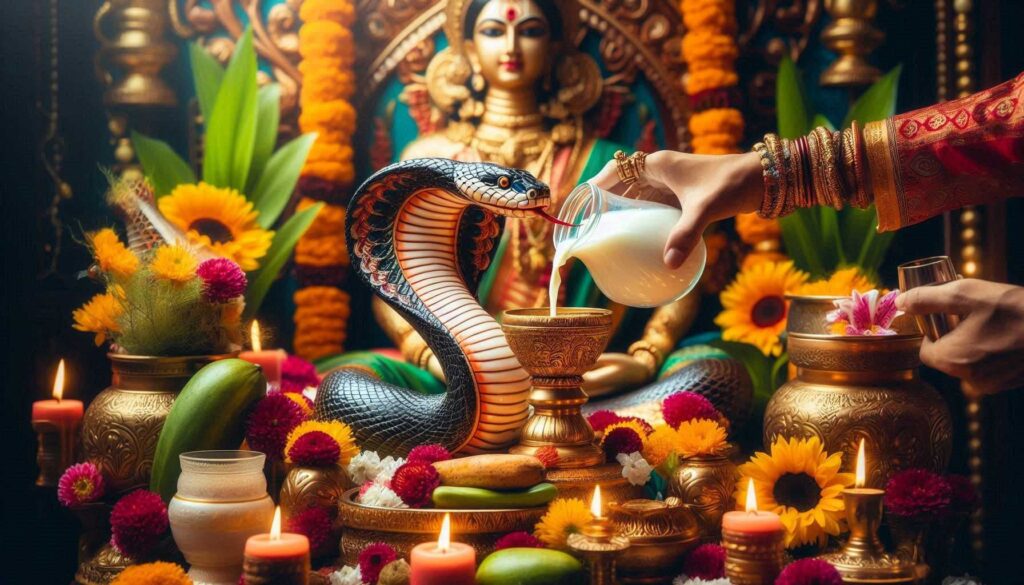Festivals in Himachal Pradesh in August 2025
Himachal Pradesh, known for its stunning landscapes and rich cultural heritage, hosts a variety of festivals that reflect the local customs, traditions, and spirituality of its people. August, in particular, is a month filled with vibrant celebrations that often coincide with the monsoon season. This article delves into the major festivals celebrated in the state during this month, focusing on their significance, rituals, and the community spirit they foster.
Read More About Hindu Philosophy
1. Raksha Bandhan

Date: August 9, 2025
Significance: Raksha Bandhan is one of the most cherished festivals in India, celebrating the sacred bond between brothers and sisters. The festival emphasizes love, protection, and familial ties.
Rituals:
- Preparation: Prior to the festival, sisters prepare a special thali (plate) that includes a rakhi (a sacred thread), sweets, and a diya (lamp). This thali symbolizes love and care.
- The Ceremony: On the day of Raksha Bandhan, sisters tie the rakhi around their brothers’ wrists while chanting prayers for their well-being. In return, brothers give gifts, promising to protect their sisters throughout their lives.
- Feasting: Families often gather for festive meals, sharing sweets and traditional dishes. The day is marked by joy and the reaffirmation of familial bonds.
Raksha Bandhan fosters a sense of unity and affection among family members, and in Himachal Pradesh, it is celebrated with particular fervor, often incorporating local customs and traditions.
2. Teej Festival

Date: August 26 2025 (Exact date may vary)
Significance: Teej is primarily celebrated by women and marks the arrival of the monsoon. It honors the reunion of Goddess Parvati with Lord Shiva, symbolizing love and devotion.
Rituals:
- Pre-festival Preparations: Women prepare by wearing new clothes and adorning themselves with jewelry. The color green is significant, symbolizing fertility and prosperity.
- Singing and Dancing: The festival is characterized by folk songs and dances. Women often gather in groups to sing traditional songs, celebrating the joys of womanhood and marital bliss.
- Fasting: Many women observe a day-long fast, praying for the well-being of their husbands and families. The fast is broken with special meals prepared from seasonal fruits and sweets.
- Celebration of Nature: The rituals often include the worship of trees and plants, particularly the banyan tree, which is considered sacred. Women may tie colorful threads around the tree, signifying their prayers for marital happiness.
Teej is not just a festival; it represents the resilience and spirit of women in Himachal Pradesh, showcasing their deep connection to nature and devotion to their families.
3. Naga Panchami

Date: August 2025 (Exact date may vary)
Significance: Naga Panchami is dedicated to the worship of serpent deities. It is believed that worshiping the Nagas protects the family from harm and brings prosperity.
Rituals:
- Worship of Snakes: On Naga Panchami, devotees create clay idols of snakes or worship live snakes, often found in natural habitats. They offer milk, flowers, and rice as offerings.
- Visiting Temples: Many people visit temples dedicated to snake deities, where special prayers are performed. It is common for devotees to recite hymns and chant mantras that praise the Nagas.
- Observing Fasts: Some devotees observe fasts, consuming only milk and fruits throughout the day as a sign of devotion. The fast is often broken with the distribution of prasad (offering) after the rituals.
Naga Panchami highlights the connection between spirituality and nature in Himachal Pradesh, reflecting the community’s respect for wildlife and its ecosystem.
nd bring communities together.
4. Manimahesh Yatra

Date: August 26 2025 (Exact dates may vary; generally in late August)
Significance: The Manimahesh Yatra is a pilgrimage to the sacred Manimahesh Lake, believed to be the abode of Lord Shiva. This pilgrimage draws thousands of devotees seeking spiritual fulfillment.
Rituals:
- Pilgrimage Preparations: Devotees prepare for the trek by seeking blessings from their families and often performing rituals at home. They carry offerings for Lord Shiva, including milk, sweets, and fruits.
- The Trek: The journey to Manimahesh Lake involves trekking through rugged mountainous terrain, typically lasting 3-4 days. Devotees often sing bhajans (devotional songs) and chant mantras to keep their spirits high during the trek.
- Bathing in the Lake: Upon reaching the lake, pilgrims take a holy dip, believing it cleanses them of sins. Many offer milk and flowers to the Shiva Lingam, a representation of Lord Shiva.
- Cultural Festivities: The pilgrimage is often accompanied by cultural celebrations, including folk dances and music, creating an atmosphere of joy and devotion.
The Manimahesh Yatra embodies the essence of pilgrimage in Hinduism, where physical endurance meets spiritual devotion, creating lasting bonds among participants.
Conclusion
The festivals celebrated in Himachal Pradesh during August 2025 highlight the state’s rich cultural heritage, showcasing the diverse rituals, traditions, and spiritual beliefs of its people. From the joyous celebrations of Raksha Bandhan and Teej to the reverence of Naga Panchami and Chhath Puja, each festival serves as a reminder of the profound connections between spirituality, nature, and community.
These festivals are not merely events; they represent the essence of life in Himachal Pradesh—an intricate tapestry woven from love, devotion, and respect for nature. The community spirit fostered during these celebrations strengthens familial bonds and enhances social cohesion, making Himachal Pradesh a unique region of cultural richness.


